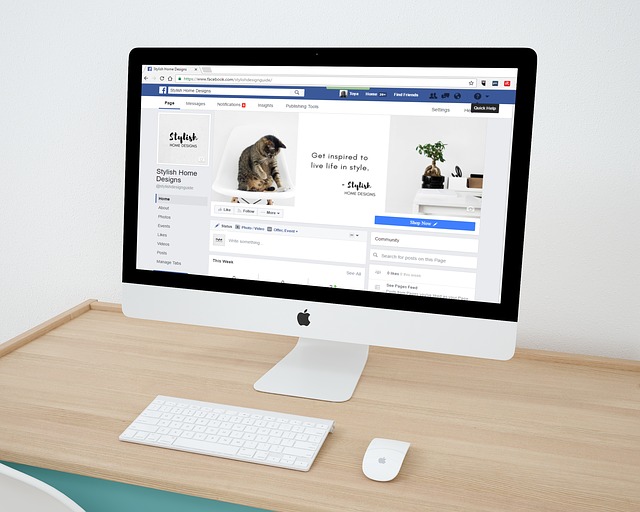
The world of DTC commerce thrives on direct consumer engagement. Nurturing lasting customer relationships is not merely a strategy we have the liberty to choose, it's a necessity.
At the core of this strategic imperative lies a simple yet economically profound truth: keeping existing customers is much more cost-effective than the perpetual chase for new ones. But the value of loyal DTC customers extends far beyond mere numbers. They become the champions of your brand, propelling your business forward through word-of-mouth referrals, bolstering your brand's presence on social media, and offering crucial feedback for product or service enhancements.
The quicker you understand that customer-centricity should be a major consideration for any and all business decisions you take, the quicker will be your path to success. DTC enterprises must remain ever-vigilant in monitoring their customer retention metrics. However, true customer loyalty goes beyond the basics of retention and churn rates. It requires a holistic understanding of the intricate dynamics that dictate why customers choose to stay or depart. Thus, while customer retention rates and churn rates serve as fundamental metrics, the world of customer retention unveils a treasure trove of additional measurements. These supplementary metrics act as guides, helping DTC companies retain customers, explore DTC growth potential, and build enduring connections that are the lifeblood of their professional success. And that is exactly what we will be discussed in this piece today. Read on to discover all the tips and tricks to manage and boost your customer retention.
What is Customer Retention and Churn Rate?
Churn Rate and Customer Retention are two pivotal metrics that spotlight the health and sustainability of any business, particularly in the context of Direct-to-Consumer (DTC) enterprises. While seemingly straightforward, these metrics harbor nuanced insights into a company's performance and ability to thrive in a competitive landscape.
Customer Retention measures the ability of a company to retain its existing customers over a defined period. Expressed as a percentage, it signifies the portion of your loyal customer base. For instance, if your business begins the year with 10 customers and loses two but gains four new ones, your retention rate is 80 percent. Churn Rate is the mirror image of Customer Retention. It encapsulates the percentage of customers a company loses within a specified timeframe.
Why do these metrics matter in the world of DTC? The answer lies in the essence of DTC strategy itself, which thrives on direct engagement with consumers. Retaining customers is cost-effective and essential for building a loyal customer base. This base becomes a powerful asset, generating referrals, boosting brand visibility on social media, and providing feedback for continuous improvement.
Calculating Retention and Churn Rate
The formula for calculating Retention Rate is:
Retention Rate = [(E - N) / S] x 100
Where:
- E represents the number of customers you have at the end of a specified period.
- N represents the number of new customers acquired during that same period.
- S represents the number of customers you had at the start of the same period.
This formula helps you determine what portion of your customer base you've managed to retain over a given period, expressed as a percentage. It's a valuable metric for assessing customer loyalty and the effectiveness of your retention strategies.
Calculating the churn rate is straightforward: take the number of customers who have ceased their association with your business during that period, divide it by the total number of customers you had at the beginning of that same period, and then multiply the result by 100.
The formula for calculating Churn rate is:
Churn Rate Formula: (Churned customers / Original number of customers) x 100
For instance, if a DTC company started the year with 100 customers and lost 10 customers by the year's end, the churn rate would be 10 percent: (10/100) x 100 = 10 percent. However, identifying churn can be more intricate than it appears. It can occur when a customer cancels a subscription or when their subscription expires without renewal. The nuances of churn become even more apparent when considering scenarios like customers canceling a service but returning shortly after.

The Impact on the Bottom Line
Let’s review the impact of these two metrics on your DTC business;
- Increased Customer Lifetime Value (CLV)
A higher retention rate signifies that more customers are staying with your business over time. This leads to increased CLV because long-term customers tend to make more purchases and generate more revenue. They are also more likely to buy additional products or services and become brand advocates.
A lower churn rate implies that fewer customers are leaving your business. As a result, you retain more of the revenue that would otherwise be lost due to customer attrition. This, in turn, boosts CLV because you're preserving the revenue potential of each customer over a more extended period.
- Decreased Customer Acquisition Cost (CAC)
A higher retention rate can lead to lower CAC over time. When you have a base of loyal customers, you can rely more on word-of-mouth referrals and customer advocacy to acquire new customers, reducing the need for expensive marketing campaigns to attract new ones.
A lower churn rate helps in cost savings because you don't need to spend as much on acquiring replacement customers for those who leave. This allows you to allocate marketing budgets more efficiently and achieve a better return on investment.
- Mitigating Churn Losses
A higher retention rate directly indicates that you are mitigating churn losses effectively. When customers stay with your business, you avoid the loss of their future potential revenue and the costs associated with acquiring new customers to replace them.
A lower churn rate means you are minimizing the loss of customers, which can significantly impact your bottom line. Lower churn rates translate to more stable revenue and reduced expenses for acquiring and onboarding new customers.
- Stable Revenue Streams
A high retention rate contributes to revenue stability. When you retain a substantial portion of your customer base, you can predict and rely on a more consistent stream of income, making it easier to plan for growth and invest in other areas of your business.
Lower churn rates lead to more stable revenue streams because you're less reliant on constantly replenishing your customer base. This stability provides a buffer against economic downturns or market fluctuations.
Beyond Acquisition: Why Retention is Supreme
The allure of customer acquisition during peak seasons can be deceiving. While it's common to intensify efforts to attract new customers during holidays and other peak shopping times, data suggests this approach may not yield the best results.
The reality is that customers acquired during these busy periods often exhibit a transient nature. They may make a one-time purchase and then fade away. In contrast, existing customers tend to spend more and are more likely to re-engage during these critical seasons. Thus, during peak times, it's essential to recalibrate priorities, emphasizing nurturing the customer base you've already cultivated. Using storytelling to advertise DTC brands can help retain more customers.
The shift towards prioritizing retention over acquisition is grounded in data-driven insights. One compelling revelation is that acquiring new customers can cost up to five times more than retaining existing ones. While acquisition expands your customer portfolio, retention transforms your existing clientele into a powerful growth engine.
Customer retention not only preserves your customer base but also maximizes its inherent value. It harnesses loyalty, advocacy, and sustained engagement. In a world where new customers often prove to be fleeting, nurturing your existing base emerges as a paramount strategy for sustained business growth.
Tools of the Trade: Customer Retention Software
Customer retention software encompasses various tools designed to measure, track, and enhance customer loyalty over time. These tools serve different aspects of retention, including:
- Analytics and Data Tools: These help accurately measure and monitor customer retention metrics over time.
- Automation Platforms: They integrate customer data from various sources, providing a comprehensive view of customer behavior.
- Customer Experience (CX) Insights: These tools gauge and enhance website experience and customer satisfaction through feedback.
- Customer Support Tools: Designed to improve customer service and measure its effectiveness.
- Messaging Platforms: Enable customer communication via emails, SMS, and push notifications to encourage their return.
- CRM (Customer Relationship Management) Tools: Manage multiple customer touchpoints within a single platform.
- Loyalty Programs: Incentivize repeat purchases and reward customer loyalty.
- Personalization Tools: Tailor content and experiences to individual customers.

Selecting a few tools that align with your company's goals and retention strategy is key to making a meaningful impact on customer retention.
Best Practices for Reducing Churn Rate
Now that we have a good idea of how to go about calculating and measuring retention and churn rate, let’s talk strategy. Here’s how to enhance customer retention and decrease that churn rate:
- Customer Loyalty Programs Customer loyalty programs are powerful tools for retention. They involve rewarding customers for their repeat business and brand advocacy. These programs often include tiered memberships, points systems, and exclusive perks. Participation makes customers feel not only appreciated but also part of an exclusive club. Brands like Starbucks and Sephora have successfully utilized loyalty programs to create communities of passionate brand advocates.
- Personalized and Customized Experiences Personalization goes beyond addressing customers by their first names. It involves using data-driven insights to tailor interactions, product recommendations, and marketing messages. Understanding individual preferences and purchase history allows brands to create relevant content and offers that resonate with customers. This tailored approach enhances the overall customer experience.
- Exceptional Customer Support Customer support isn't just about solving problems; it's about proactive care. Brands can differentiate themselves by offering prompt and helpful assistance. This includes offering hassle-free returns, providing accurate product information, and training support agents to be knowledgeable and friendly. Excellent customer support builds trust and fosters long-term loyalty.
- Nurturing Email Campaigns Email marketing remains a vital tool for customer retention. Nurturing email campaigns keeps customers engaged even when they're not actively shopping. Brands can share valuable content, offer tips, and provide product updates through regular emails. These campaigns help maintain a connection with customers and encourage repeat purchases.
- Creating a Community Building a brand community is more than marketing—it's about creating a space where customers can engage with each other and the brand itself. Online forums, social media groups, and dedicated discussion platforms provide opportunities for customers to share experiences, seek advice, and connect. This sense of belonging fosters deeper loyalty as customers feel part of a larger community.
- The Subscription Model The subscription model offers a dependable source of recurring revenue and secures long-term customer relationships. Brands can provide subscriptions for products or services that customers regularly use. This model ensures customers keep returning, and it can be enhanced with customization options to cater to individual preferences.
- Personalized Emails Personalized emails extend beyond simple recommendations. They encompass tailored messages, such as birthday greetings, anniversary notes, and exclusive promotions based on previous interactions. These personalized touches make customers feel special and appreciated, reinforcing their loyalty to the brand.
- Retargeting and Remarketing Retargeting and remarketing strategies keep the brand in the minds of potential customers who have previously engaged with the brand's website or products. Through strategically placed ads and reminders, brands rekindle the interest of these individuals. This ensures that the brand remains a top choice when they decide to make a purchase, increasing the likelihood of repeat business.
- Customer Feedback Effective customer retention involves actively listening to customer feedback. It's not just about resolving complaints but also about gaining insights into customer preferences, pain points, and expectations. Brands that actively seek and act upon customer feedback demonstrate their commitment to continuous improvement and customer satisfaction.
-
The Rise of Chatbots
Chatbots are becoming increasingly valuable for enhancing both customer support and engagement. They offer instant assistance, answer common queries, and guide customers through various processes. Chatbots are available 24/7, ensuring that customers receive timely responses and support, which is particularly crucial for retaining customers in today's fast-paced digital landscape.
Incorporating these strategies into your customer retention efforts provides a comprehensive approach to fostering loyalty and building lasting customer relationships. Each approach offers a unique way to engage, nurture, and retain customers, ultimately contributing to the sustained success of your business.
In Conclusion
Effective customer retention and DTC performance marketing is a vital component of any successful business strategy. It contributes to sustainable revenue growth and fosters a loyal customer base that can become advocates for your brand.
However, managing customer retention can be a complex task that requires dedication, resources, and expertise. If you're looking to take your customer retention efforts to the next level and maximize your business's potential, consider partnering with Saffron Edge. With our proven track record in delivering tailored customer retention solutions, we can help you drive customer loyalty, boost revenue, and achieve lasting success with our retention marketing strategy.
Don't wait any longer to unlock the full potential of your customer retention strategy. Contact Saffron Edge today!
Direct-to-Consumer Excellence
Related Blogs
We explore and publish the latest & most underrated content before it becomes a trend.
2 min read
5 Effective Tips To Optimize Your Business Page On Facebook
By Praveen Kumar
Subscribe to Saffron Edge Newsletter!

Direct-to-Consumer Excellence










